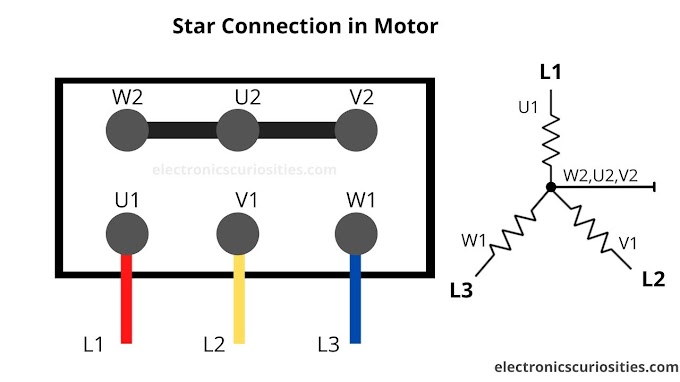How to Become an Embedded Software Engineer: A Comprehensive Guide
Are you intrigued by the world of embedded systems and dream of becoming an embedded software engineer? Well, you're in the right place! In this article, we will walk you through the essential steps and skills required to embark on this exciting journey.
Steps for becoming Embedded Software Engineer
- Introduction to Embedded Software Engineering
- Mastering C Programming
- Exploring Data Structures
- Pointers and Addresses in C
- Multi-Threading in C
- Performance Optimization
- Learning Additional Programming Languages
- Getting Hands-on with Development Boards
- Choosing the Right Development Board
- The Power of Arduino and Raspberry Pi
- Understanding GPIOs
- Digital to Analog Conversion (DAC)
- Analog to Digital Conversion (ADC)
- The Significance of Interrupts
- Communication Protocols
- The Magic of DMA (Direct Memory Access)
- Memory Management
- Delving into Real-Time Operating Systems (RTOS)
- The Art of Reading Electrical Schematics
- Unraveling Data Sheets
- Harnessing the Power of API Documentation
- The Soft Skills You Need
- Conclusion
- Introduction to Embedded Software Engineering
Embedded software engineering involves creating software that runs on embedded systems, such as microcontrollers or development boards. These systems are often found in everyday devices, from washing machines to smartphones.
Check YouTube Video for more detailed explanation
Steps for becoming Embedded Software Engineer
Mastering C Programming
C programming is the foundation of embedded software development. You need to go beyond the basics and understand pointers, addresses, multi-threading, and data structures thoroughly.
Exploring Data Structures
Data structures are essential for efficient programming. Mastering them will help you write optimized code.
Pointers and Addresses in C
A deep understanding of how pointers and addresses work in C is crucial for memory management and efficient programming.
Multi-Threading in C
Learn how to implement multi-threading in C to enhance the performance of your embedded software.
Performance Optimization
Optimizing your code for performance and power efficiency is a critical skill in embedded software engineering.
Learning Additional Programming Languages
While C is the primary language, consider adding C++ and Python to your skill set for versatility.
Getting Hands-on with Development Boards
Start experimenting with development boards to apply your knowledge practically.
Choosing the Right Development Board
Select the appropriate development board, such as Arduino, Raspberry Pi, or STM32, based on your project requirements.
The Power of Arduino and Raspberry Pi
These boards offer extensive resources and tutorials, making them excellent choices for beginners.
Understanding GPIOs
Master the use of General-Purpose Input/Output pins for interfacing with external devices.
Digital to Analog Conversion (DAC)
Learn how to convert digital signals to analog for controlling various components.
Analog to Digital Conversion (ADC)
Understand how to read analog data using ADC for sensor integration.
The Significance of Interrupts
Interrupts are essential for real-time event handling in embedded systems.
Communication Protocols
Explore communication protocols like SPI, I2C, and UART for data exchange with other devices.
The Magic of DMA (Direct Memory Access)
DMA can significantly reduce CPU overhead by handling data transfers independently.
Memory Management
Comprehend flash and DDR memory management for efficient data storage and retrieval.
Delving into Real-Time Operating Systems (RTOS)
Learn about RTOS systems like FreeRTOS to manage tasks effectively.
The Art of Reading Electrical Schematics
Decode electrical schematics to understand hardware connections better.
Unraveling Data Sheets
Data sheets provide crucial information about microcontrollers, sensors, and development boards.
Harnessing the Power of API Documentation
Leverage API documentation to streamline software development, especially for complex tasks like Bluetooth and USB integration.
The Soft Skills You Need
As an embedded software engineer, teamwork, problem-solving, communication, and the ability to work under pressure are as important as technical skills.
Becoming an embedded software engineer is an exciting journey that combines technical expertise with practical skills. Remember to keep learning, experimenting, and developing your soft skills to excel in this dynamic field.
Frequently Asked Question about Embedded Software Engineering
What programming languages are essential for embedded software engineering?
While C is fundamental, it's beneficial to also learn C++ and Python for versatility.
Which development boards are suitable for beginners? Arduino and Raspberry Pi are excellent choices for beginners due to their extensive resources and tutorials.
Why is understanding data sheets important for embedded software engineers?
Data sheets provide critical information about hardware components, allowing engineers to write code that interacts effectively with the hardware.
What are the key soft skills for embedded software engineers? Soft skills such as teamwork, problem-solving, communication, and the ability to work under pressure are crucial for success in this field.
How can I stay updated with the latest trends in embedded software engineering? Follow industry news, join online forums and communities, and participate in continuous learning and development.
Now that you have a comprehensive guide to becoming an embedded software engineer, it's time to embark on your journey. Remember, practice, dedication, and a curious mind are your best allies in this exciting field.
Thanks!
Happy Learning!




